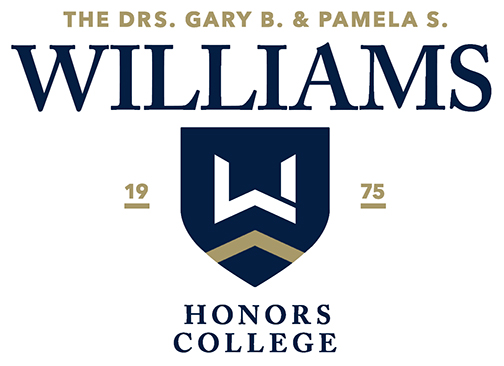Date of Last Revision
2023-05-02 18:56:42
Major
Appl Math/Polymer Eng BS/MSPE
Degree Name
Bachelor of Science
Date of Expected Graduation
Spring 2016
Abstract
A hydrogel is a water swollen polymeric network that has the potential to transform a variety of biomedical applications because of its biocompatibility and water content. Unfortunately, hydrogels typically have poor mechanical robustness. The majority of the content is water, while the remaining structure consists of a physical network, a covalent network, or a combination of both, yielding strength and toughness. There are several strategies attempted to improve mechanical properties including double network hydrogels comprised of two interpenetrating networks: one being a highly crosslinked sacrificial network and the other being a weakly crosslinked network that maintains reversibility after deformation. However, no current method provide a sufficient combination of failure toughness and fatigue resistance to satisfy all applications such as drug delivery systems and tissue engineering. No synthetic hydrogel can compare to any natural hydrogel found in the body such as skin or collagen.
Before any hydrogel can contain all desired properties, each individual network needs to be understood in a more complete way. The focus of this research is on the physically crosslinked hydrogel using hydrophobic interactions as the crosslinking sites. A single network hydrogel typically has poor mechanical properties. Therefore, hybrid networks are of interest in strengthening a hydrogel, and the role of a physical network is to dissipate energy via sacrificial bonds. Brownian dynamics are employed to simulate the hydrogel. The diffusive behavior is the simplest response to start with and it is presented that the hydrogel model follows the Sticky Rouse model for diffusion. The two variables that are taken into consideration are the attractive energy between hydrophobic groups and the length of each crosslinking site, denoted by simple crosslinks and complex crosslinks. It is important to interpret how the dynamics depend on these quantities. Once the dynamics are understood, we can look at the deformation behavior of a hydrogel to interpret the mechanical properties based on different variables. The deductions reached from the diffusive behavior in a physical network can be utilized in the future for the design of hybrid network hydrogels.
Research Sponsor
Dr. David Simmons
First Reader
Dr. Curtis Clemons
Second Reader
Dr. Pat Wilber
Recommended Citation
Stilke, Morgan A., "Diffusive Behavior of Physically Cross-linked Hydrogels" (2016). Williams Honors College, Honors Research Projects. 326.
https://ideaexchange.uakron.edu/honors_research_projects/326
Included in
Applied Mathematics Commons, Other Engineering Commons, Polymer and Organic Materials Commons


